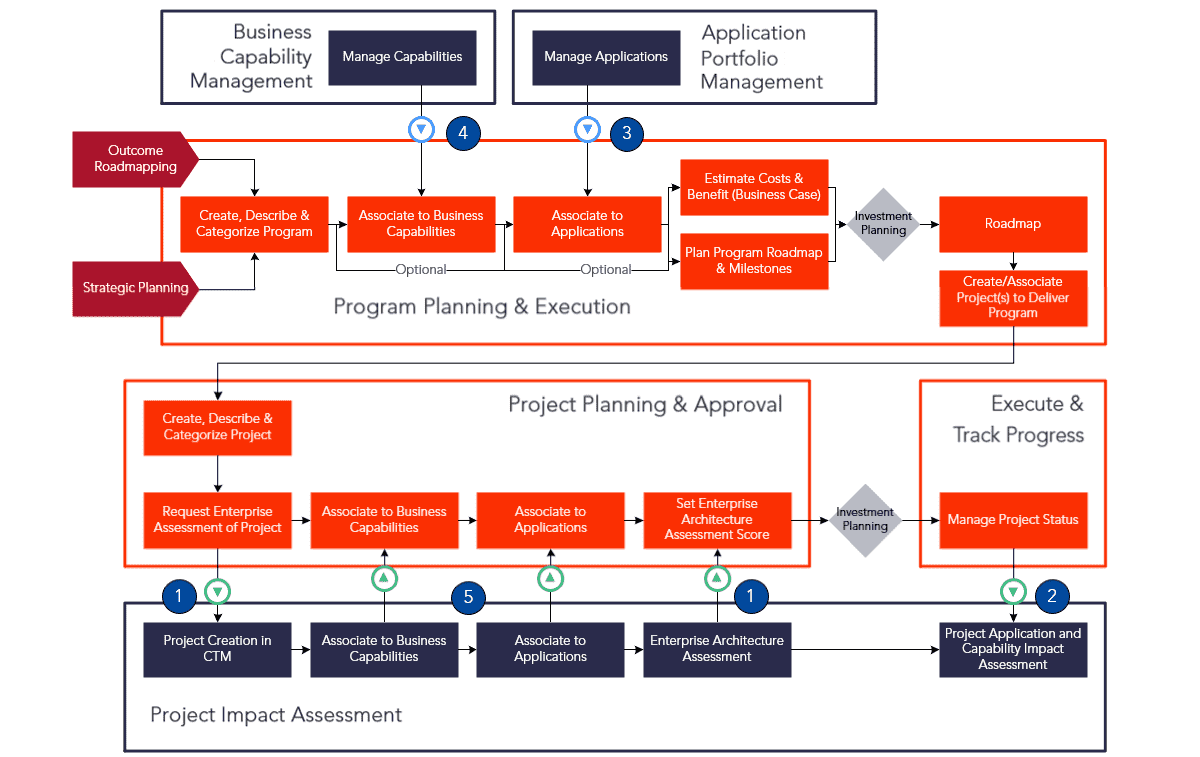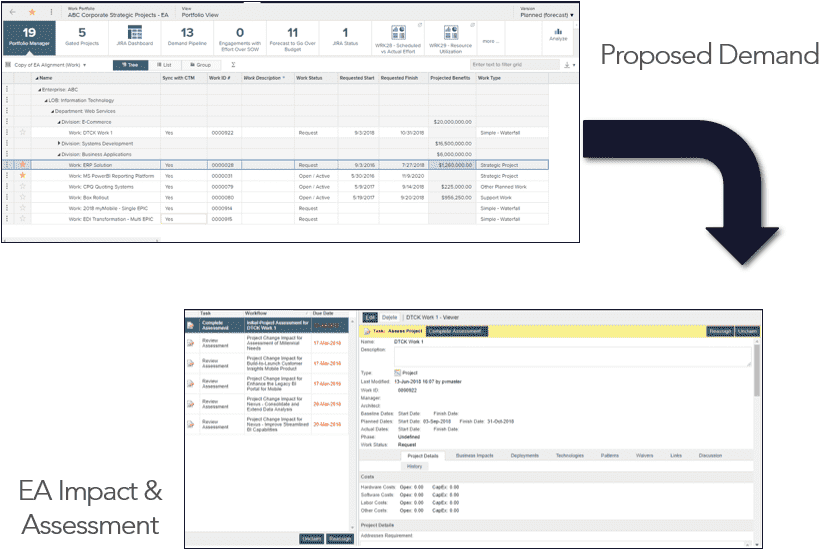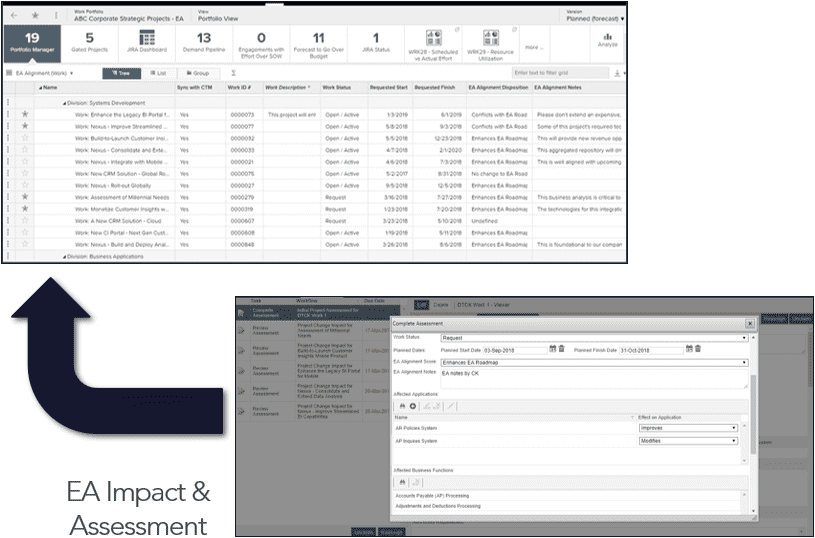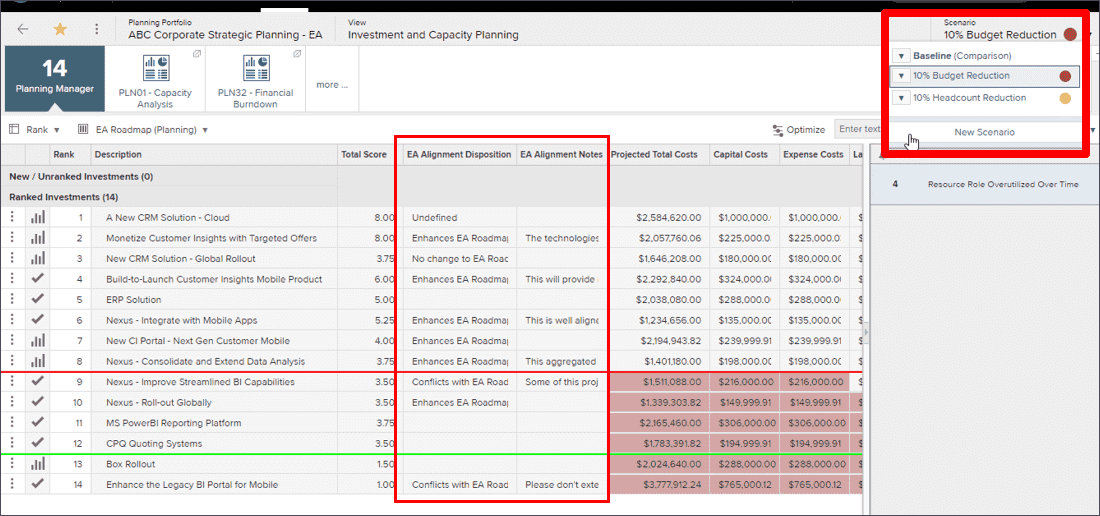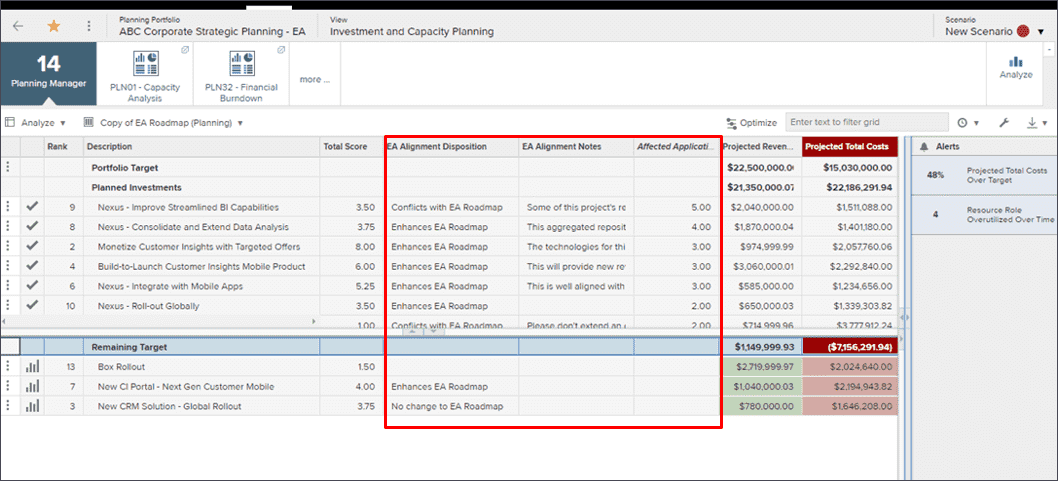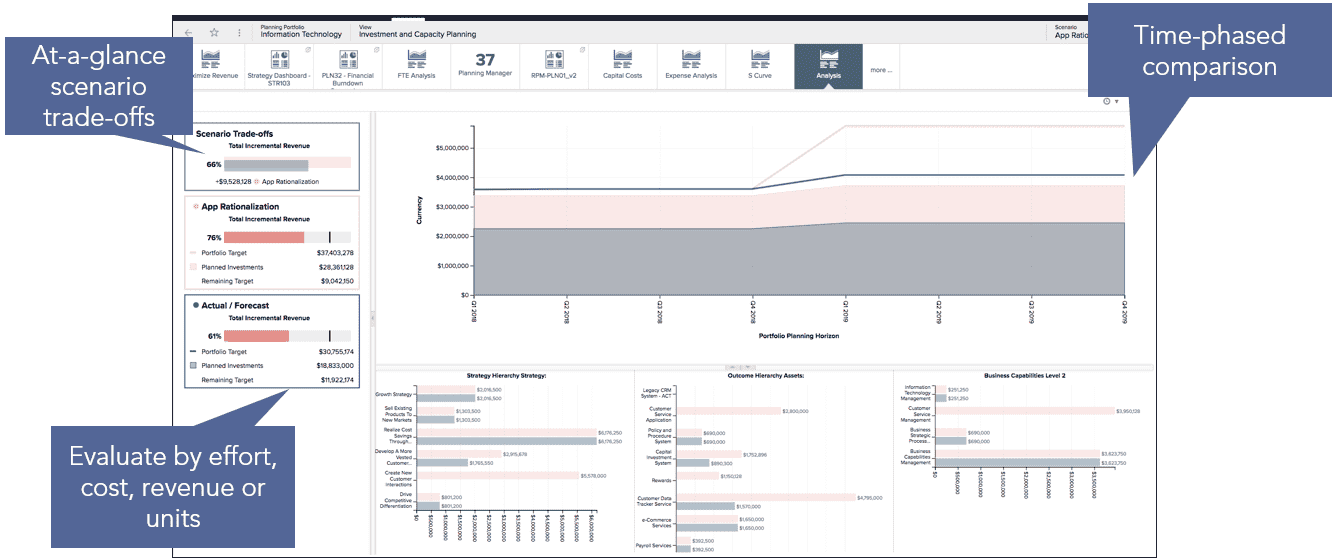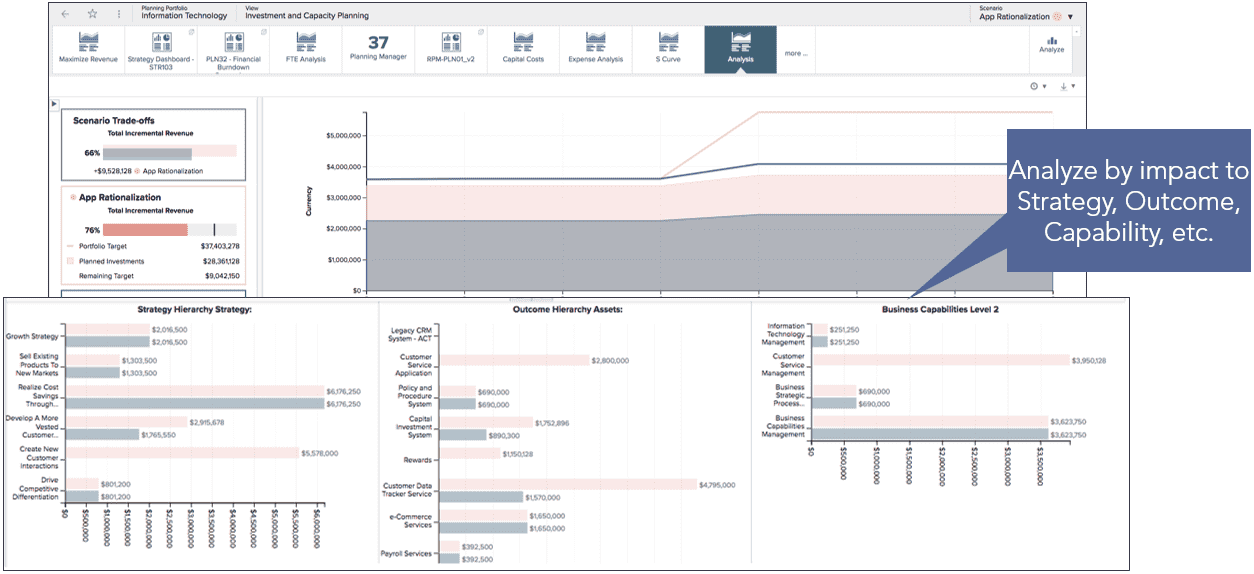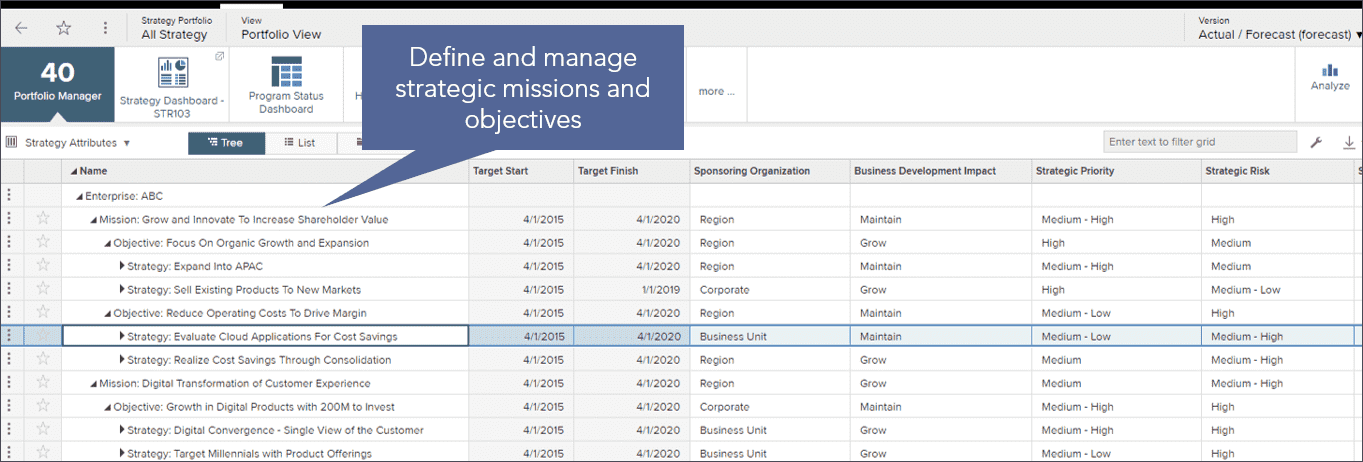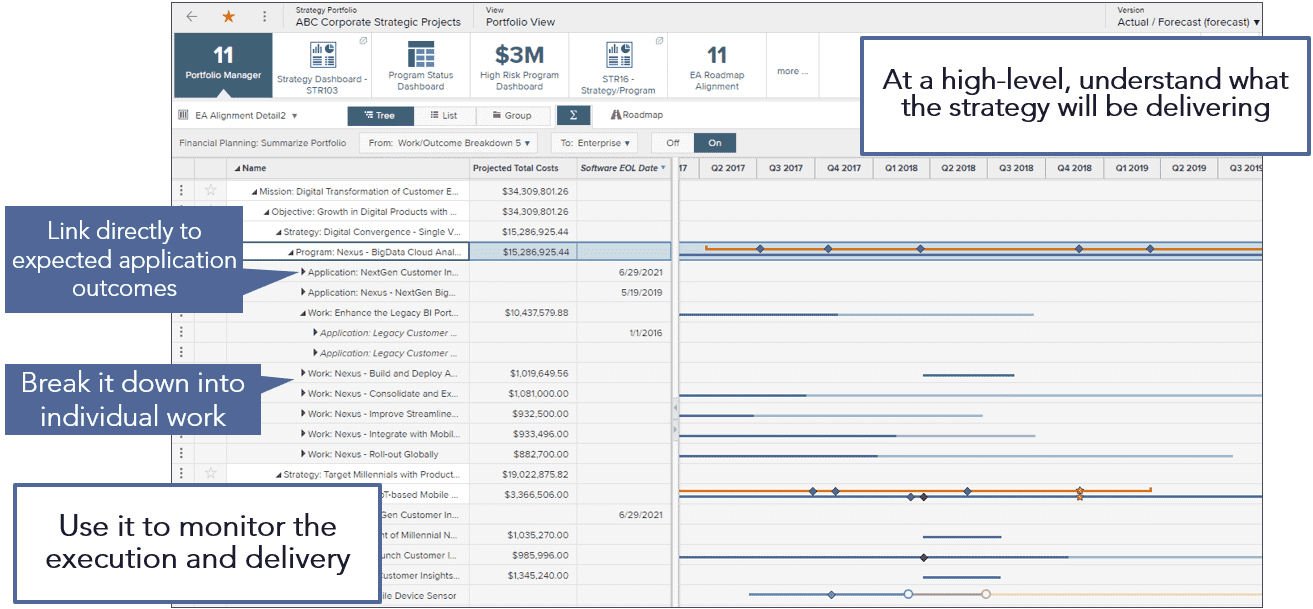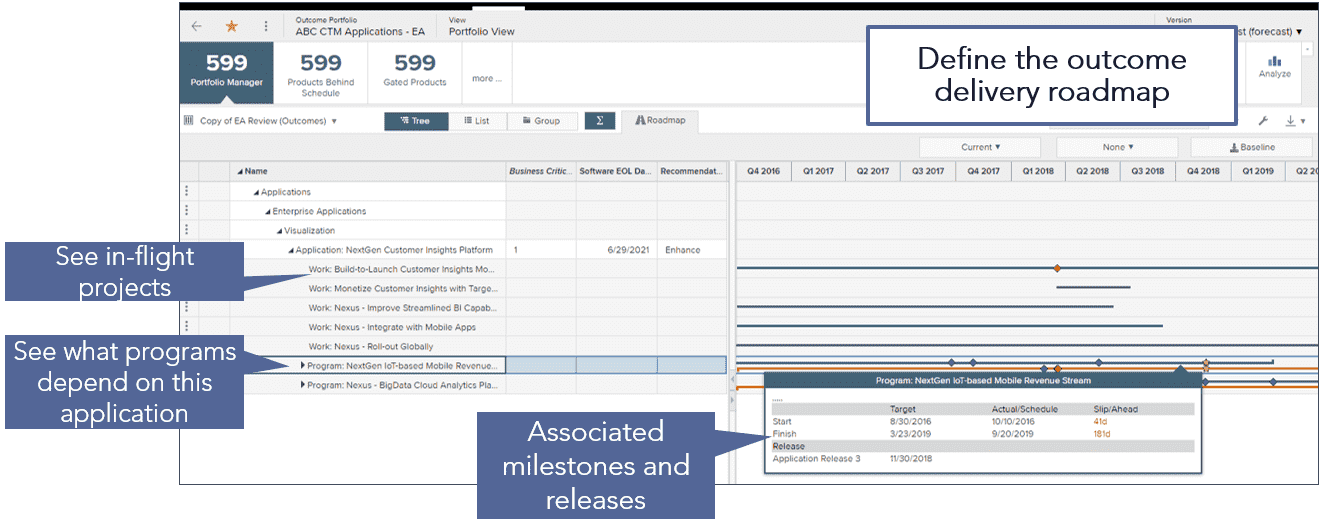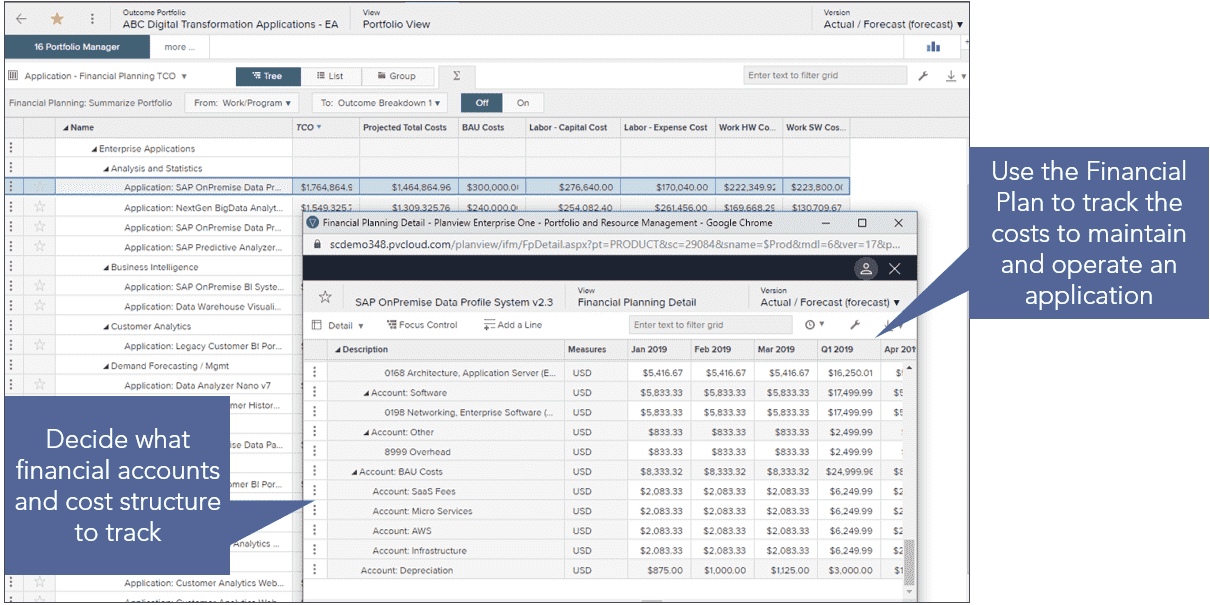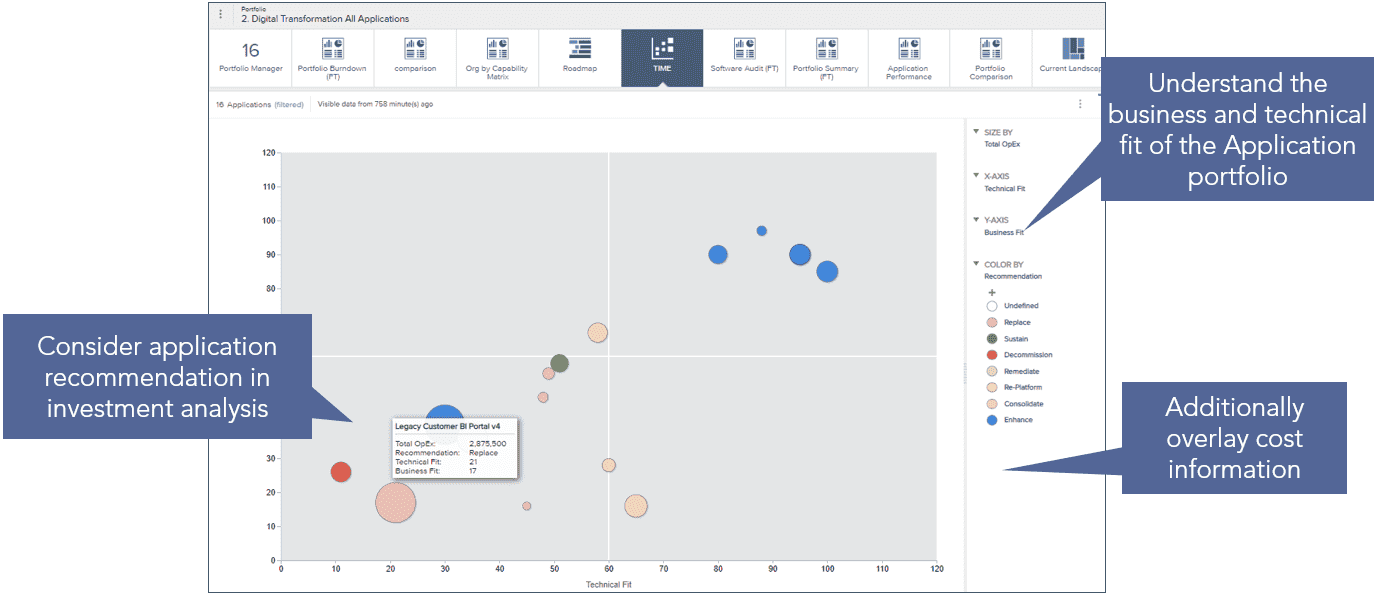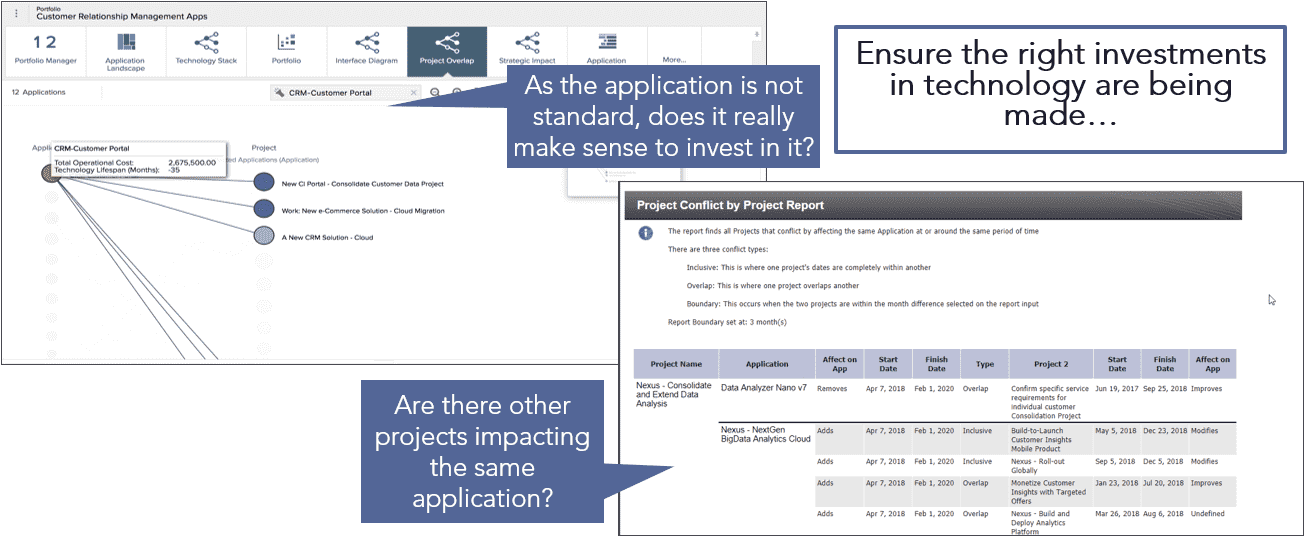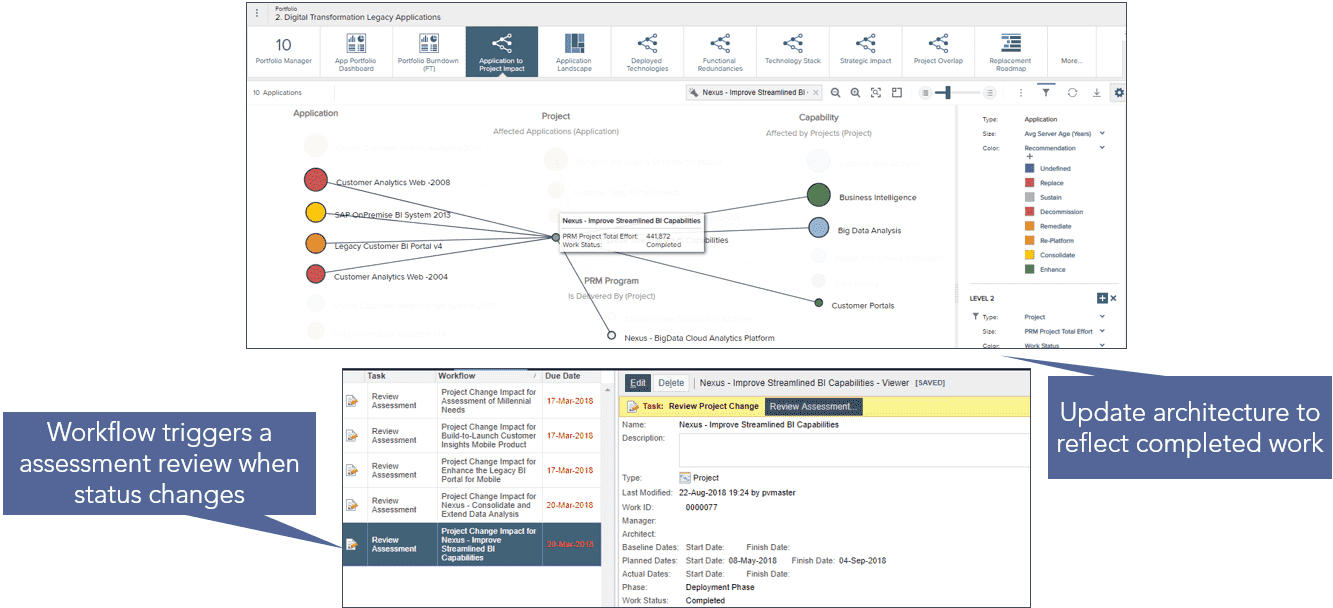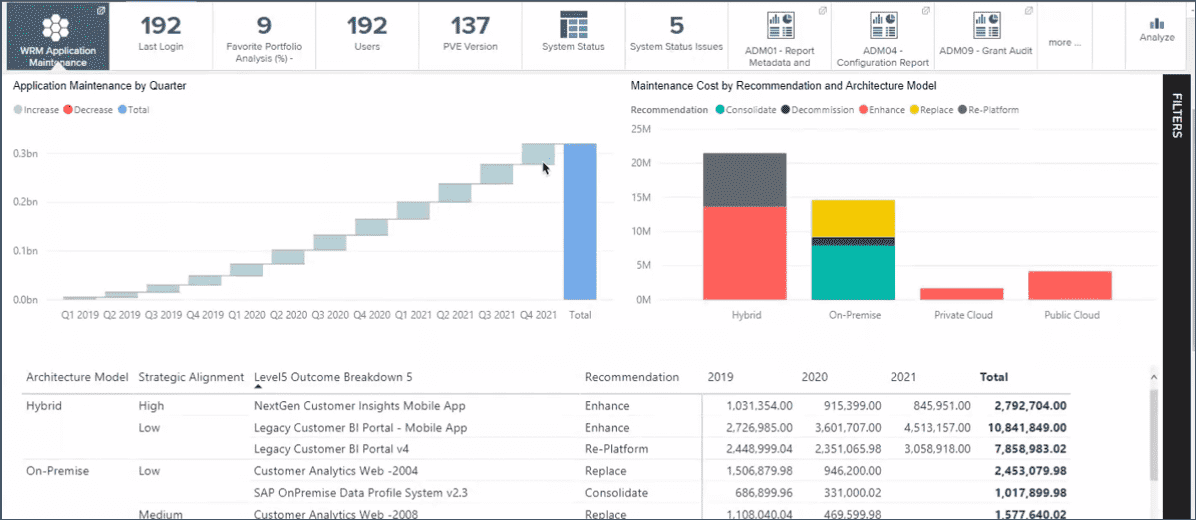Enterprise Architecture Management
Enterprise Architecture Management
The Enterprise Architecture Management capability’s enablers include Application Portfolio Management, Technology Portfolio Management, and Capability Portfolio Management. Each capability within the Planview Capability Framework has a distinct set of features and functionality, business processes, best practices, and analytics and reports that deliver value to customers in the form of specific business outcomes.
Enablers and Business Value
Application Portfolio Management
Provides insight into the impact of application changes, business demand, and strategic priorities on your application portfolio while increasing business value through portfolio optimization and reduced cost and complexity. Resulting business outcomes include:
- We can actively manage and govern our portfolio, and understand what applications support our business.
- We can understand how applications are aligned with business priorities.
- We can identify functional redundancy in our application portfolio.
- We can calculate the costs of individual applications and our overall portfolio.
- We can identify at-risk applications to their underlying technologies.
- We can evaluate our application portfolio for information security impacts and risk.
- We can score and analyze our applications using criteria that reflects our business and technical priorities.
- We can plan application retirement and replacements through analysis and develop application roadmap and transition plans.
Technology Portfolio Management
Allows you to proactively understand and address the business impact and risk of aging technologies and improve compliance to meet your preferred standards. Resulting business outcomes include:
- We can understand what technologies are currently deployed in our environment, and actively manage and govern our portfolio.
- We can anticipate and plan for technology risks associated with age and support.
- We can support technology standards governance decisions and determinations.
- We can create and manage technology roadmaps.
- We can evaluate and reduce the technology footprint and complexity in our landscape.
- We can plan technology retirement and replacements through data-based analysis and establish technology roadmap and transition plans.
- We can forecast resourcing needs.
Capability Portfolio Management
This planning and analysis function aligns investment and technology portfolios with enterprise strategic priorities to drive optimal performance and advance business capability maturity. Resulting business outcomes include:
- We can establish a common vocabulary to optimize the quality and speed of decision-making and reduce confusion in cross-organizational discussions.
- We can establish explicit governance over the entire body of change and investment portfolios with holistic enterprise oversight.
- We can drive significant IT investments with business implications through business strategy as articulated via business architecture.
- We can use business architecture to analyze the business model and establish actionable roadmaps, funding, and priorities needed to deliver results ranging from tactical deployments to long-term business transformation.
- We can define and track expected business outcomes.
- We can leverage lessons learned to continually improve our planning process year-over-year.
Best Practices
Involve the right people
Build relationships with your colleagues and multidisciplinary teams who make decisions about business model and operating model changes, develop strategies for internal and customer-facing products and services, and execute process reengineering and capability enabling technologies—these are your primary internal customers. Understanding capability gaps and requirements and delivering the right outcomes and results can only be achieved by collaborating with different roles across an organization and with customers.
Create a strategic business outcome roadmap
Prepare a roadmap that outlines how the organization’s business and operational model can be modified to fulfill its strategic objectives. Share the change roadmap and the affected value streams, business capabilities, applications, and technologies required to achieve business outcomes with your PMO colleagues and develop a communication plan that addresses the needs of all stakeholders.
Focus on business architecture
Focus on aligning customer’s need in products and services with the supporting technologies, services, locations, applications, and other assets to achieve business outcomes, rather than on IT-driven architecture. As enterprise architects dedicate more time to customer journeys and the business architecture and business-related portfolios, they can support the corporate strategy, deliver better outcomes, and create a portfolio of transformation programs that is more architecturally sound.
Create and document a target output list
Create and document a target output list and provide your stakeholders with visual representations of the architecture using enterprise architecture management software.
Limit data collection
Extract the maximum amount of value from the least amount of data. Ensure that your data collection focuses on what is necessary to produce valuable stakeholder outputs based on your target outputs list.
Determine data ownership
Identify data owners who will oversee a subset of the target data items. Ensure that the data collected is complete, accurate, and consistent.
Deliver incrementally
Successful enterprise architecture management programs deliver small successes in regular intervals. Identify the kinds of questions and outputs that were answered and announce each success separately.
Enterprise Architecture Management Processes
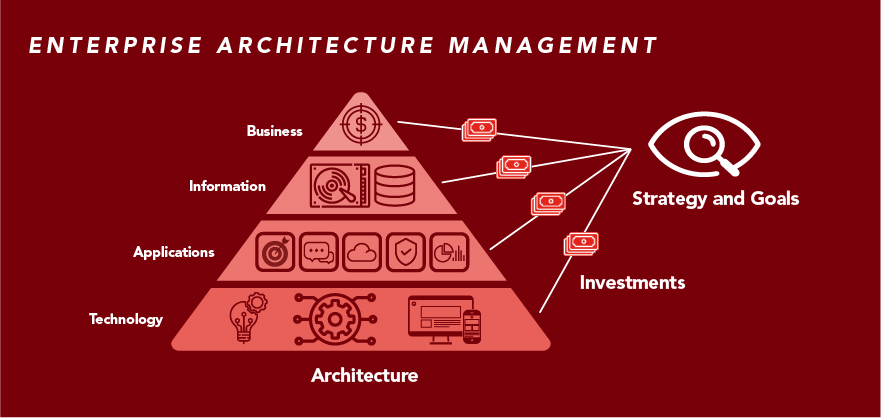
The enterprise architecture capability provides insight into your application and technology portfolios in order to understand and actively manage the applications and technologies that support your business. From there, the capability portfolio management function allows you to align those insights with your organization's strategic priorities and expected business outcomes.
Related Capabilities
Capacity Planning
Analyze capacity against demand to assess current and new investments.
Read morePrioritization and Scenario Analysis
Assess and prioritize investments before the approval of your portfolio plan.
Read moreRoadmapping
Translate strategic ideas into an interactive timeline of business outcomes and deliverables.
Read more
Supported Solutions
Project Portfolio Management
With a line of sight from strategy to delivery, Planview enables leaders to optimize program and project portfolios, balance capacity against demand, prioritize work, focus resources, and empower teams to deliver.
Read moreEnterprise Agile Planning
With a scalable, enterprise-level Lean Portfolio Management, Agile Program Management, and Agile delivery platform, Planview enables planning and value delivery from the strategic portfolio level to the agile team.
Read moreStrategic Portfolio Management
With dynamic planning and execution, Planview’s Strategic Portfolio Management solution enables leaders to invest incrementally, quickly shift resources, and use cross-functional teams to align organizational goals to an ideal team work structure.
Read more


